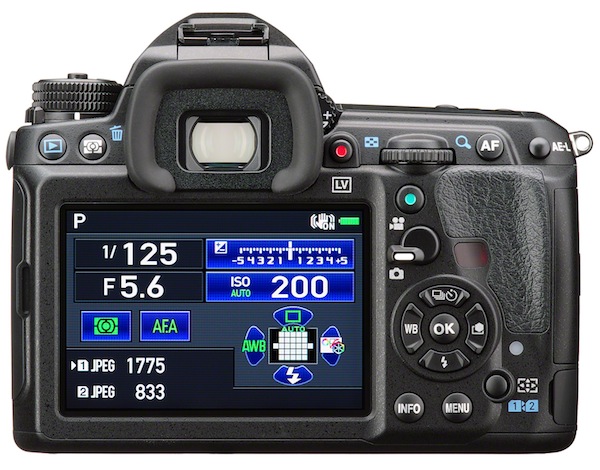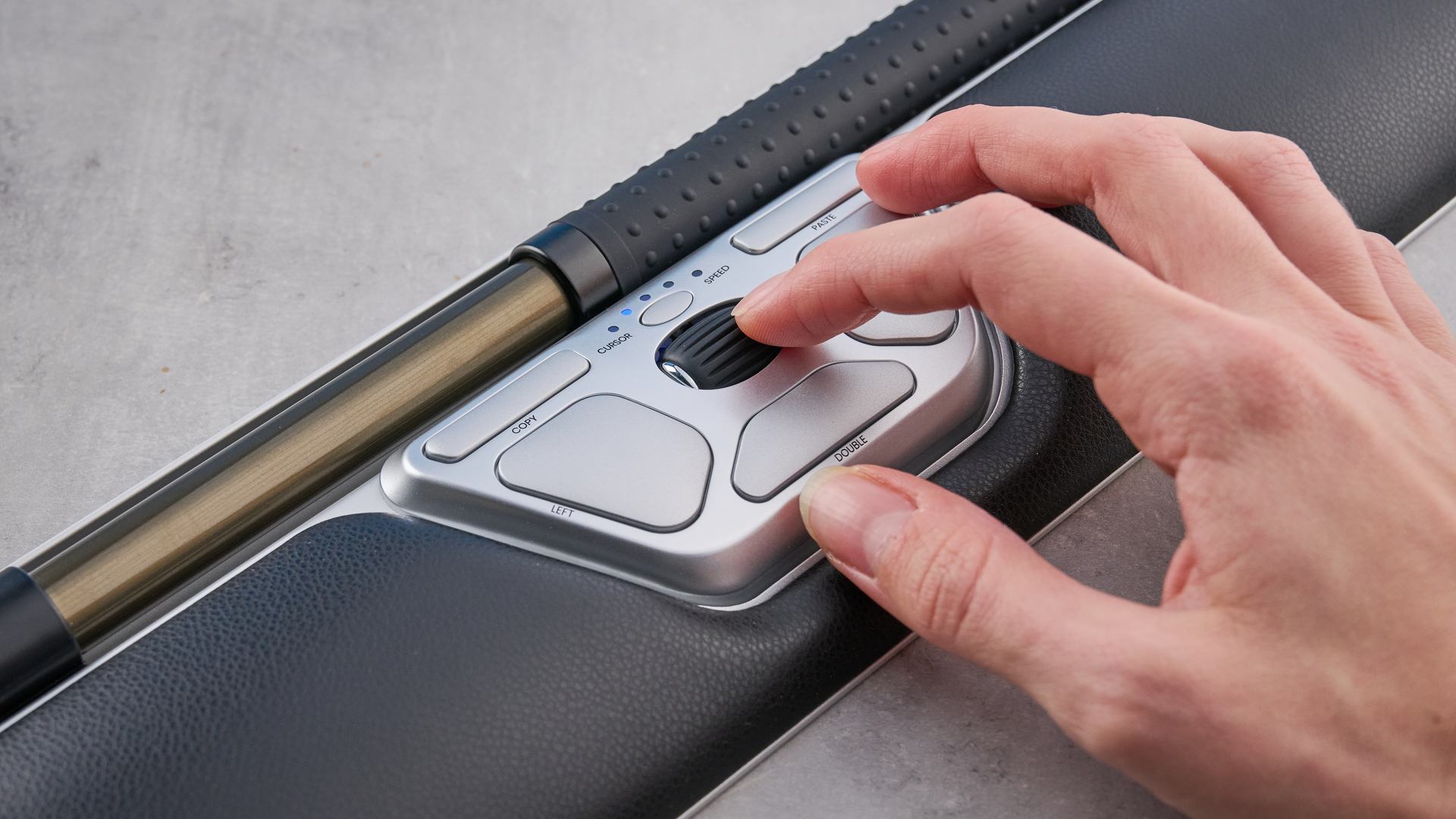Pentax K-3 II DSLR Wiggles Image Sensor for Better Color
Combining four overlapping images promises better color in photos of still subjects. Meanwhile, new AF aims to capture motion faster.


Camera makers have been fibbing a bit. When they say, for example, that a camera captures 24 megapixels, what they really mean is 24 million subpixels, with 6 million for red, 6 million for blue and 12 million for green — the three primary colors that make up all the others. (Green gets twice as many subpixels because it's more important for how people see color).
Ricoh's new $1,100 (body only) Pentax K-3 II DSLR — available in May — aims for better color resolution by using its moving image sensor to capture four images, each offset by a single subpixel, and combining them into one photo. The catch: Your subject has to be perfectly still. So, it might be useful for product photos and maybe landscapes, but not for portraits or action shots.
MORE: Best DSLRs for All Budgets
However, Pentax has also pumped up the action-shooting potential of this new version of the K-3 with the claim of faster autofocus, thanks to better motion-analysis algorithms. And to help a photographer who's also moving, this DSLR boasts better image stabilization — using that same moving image sensor capability.
Combining colors
Most cameras, even the K-3 II, capture images using what's called the Bayer array: Color filters over each photosite (pixel) are arranged in a grid with two green filters for every blue or red one. The eye is more sensitive to green than it is to red and blue, so cameras capture twice as much green data to get better quality.
Here, Pentax finds a second use for the camera's shake-reduction technology, which shifts the sensor in the opposite direction to which a jittery camera moves, in order to cancel out the movement. The K-3 II's system is so precise that it can shift the sensor by a single pixel, four times, and combine the images so that each pixel in the final photo has been shot with one red, one blue and two green filters over it.
(I asked Pentax for graphics to better show how this works, but the company said it couldn't provide anything we could publish.)
Get instant access to breaking news, the hottest reviews, great deals and helpful tips.
Pentax claims that this technique provides better color accuracy and results in less image noise (graininess), since the camera gathers more data for each pixel. Normally, a camera's processor fills in the missing color data by looking at adjacent pixels and interpolating (deducing) what color each one should be. But the K-3 II, in this special mode, records all three colors for each pixel without any guesswork.
To get four photos to overlap perfectly, you have to keep the K-3 II still on a tripod and shoot something that doesn't — in fact, can't — move. That could be a still life, product photos, buildings or maybe landscapes, if no wind rustles the leaves.
Pentax isn't the first camera maker to repurpose its image stabilizer. The recent Olympus O-MD E-M5 Mark II mirrorless camera does something similar, but instead of capturing more color, it simply captures more pixels, allowing its 16-MP sensor to output a 40-MP photo. We tested this capability in our review of the OM-D E-M5 Mark II, and it worked as promised in a studio setting. I'm curious to see what Pentax's twist on sensor shifting does for photos.
Faster action shooting promised
For most times when the subject isn't perfectly still, Pentax has upped the image stabilization so that the shifting sensor can achieve 3.5 to 4.5 f-stops — meaning that, in theory, you can now get a sharp photo using a shutter speed that's 4.5 times slower than what you would need if you were shooting without image stabilization. In this area, Olympus may still have the edge. The M5 MII can compensate for motion along five axes, which allowed me to walk around and capture video as if I'd been wearing a steady cam. I'm anxious to see how well the K-3 II does.
MORE: Why Autofocus Is the New Megapixel
Here's one more thing the Pentax K-3 II (and original K-3) and Olympus M5 MII cameras have in common: Each is weather-sealed for shooting in the elements. The new K-3 II, however, also adds temperature resistance down to 14 degrees Fahrenheit (minus 10 degrees Celsius).
The third use for the moving sensor is astro tracing. Using its GPS receiver (new for the K3 line), the camera can avoid blurry images by shifting its sensor to compensate for the movement of the Earth during a long exposure (which you need at night).

Pentax also claims that its new DSLR can focus faster because it features a better processor and algorithms to analyze and anticipate a subject's movements — say, a running athlete or toddler. Motion tracking is a big battleground for high-end cameras. (Shooting speed remains the same, at about 8 frames per second, which is pretty fast for a DSLR.) The recent, 10 fps Canon 7D II DSLR (see review) is very adept at this task, and Samsung is continually tweaking the software in its 15 fps NX1 mirrorless camera to improve motion tracking.
So often, when it seems there's nothing more to do with photography, a camera maker brainstorms a new idea. In a future review, we'll explore how well Pentax's ideas work on the K-3 II, which is set for release this May.
- Best Photo Editing Software to Perfect Your Pictures
- How to Take Great Photos with a DSLR or Mirrorless Camera
- Best Mirrorless Cameras
Follow Sean Captain @seancaptain. Follow us @TomsGuide, on Facebook and on Google+.
Sean Captain is a freelance technology and science writer, editor and photographer. At Tom's Guide, he has reviewed cameras, including most of Sony's Alpha A6000-series mirrorless cameras, as well as other photography-related content. He has also written for Fast Company, The New York Times, The Wall Street Journal, and Wired.
-
atheus "Pentax has upped the image stabilization so that the shifting sensor can achieve 3.5 to 4.5 f-stops — meaning that, in theory, you can now get a sharp photo using a shutter speed that's 4.5 times slower than what you would need if you were shooting without image stabilization."Reply
F stops are logarithmic, so 4 f stops would be 2^4 change in shutter speed - which is 16x faster/slower, not 4x.
